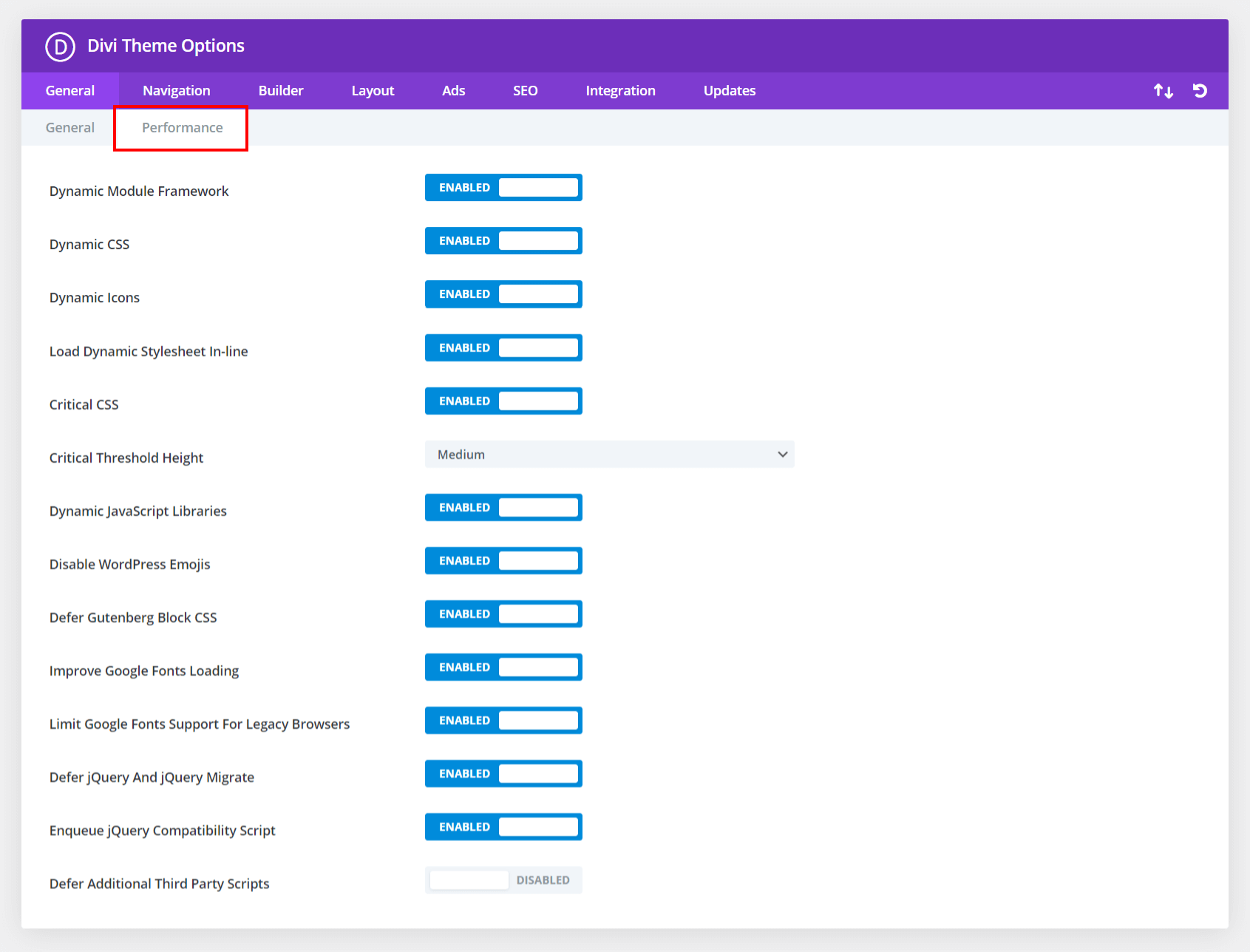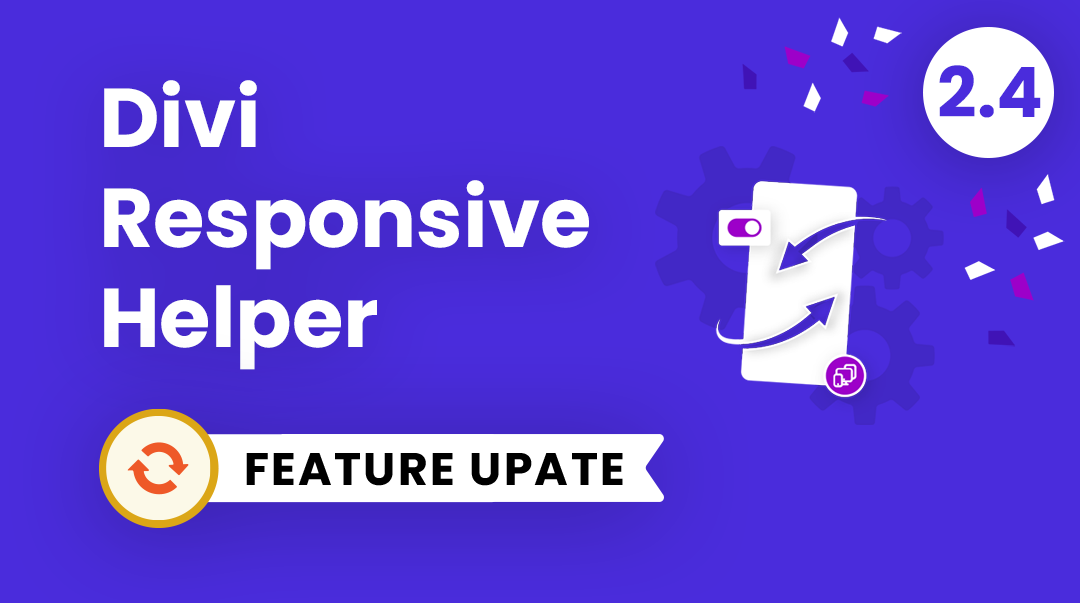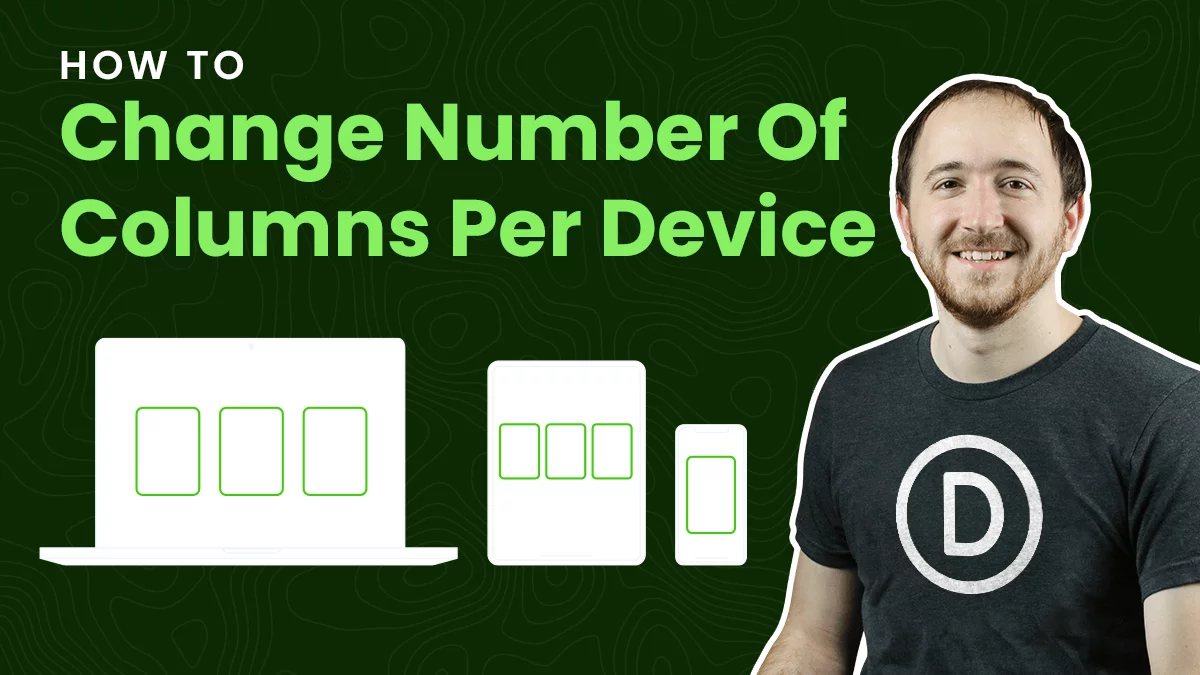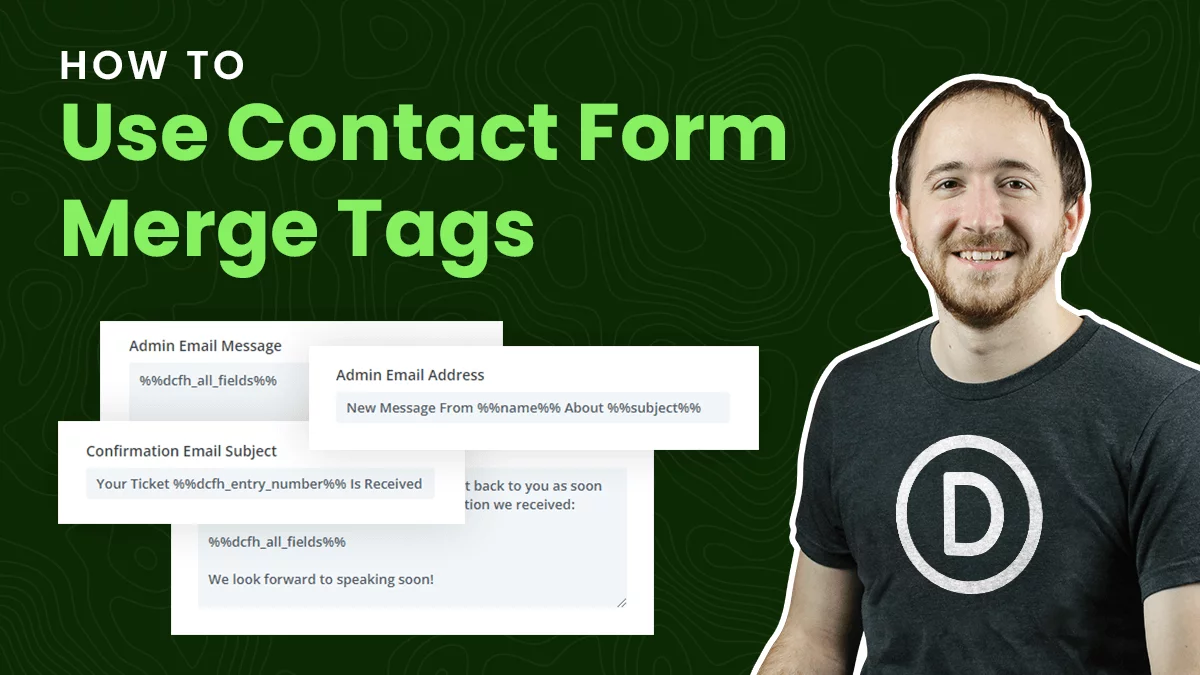The Greatest Divi Update Ever
For years, people complained about Divi performance. Honestly, most of the issues were actually related to stupid cheap hosting! That’s right, I said it. Get yourself some good hosting! Although perhaps some felt as if Elegant Themes was deaf to these complaints, I assure they were not! The have been working on many foundational and performance updates since early 2020. Today is the first of these big changes coming to Divi, and to date one of the best days ever for Divi users! Elegant Themes has released a huge update to version 4.10 with tons of performance improvements! In this tutorial I will try my best to give you a clear, simple to understand explanation of each of the new settings. I will explain in simple terms all of the important features of this new important Divi performance update.
▶️ Please watch the video above to get all the exciting details! 👆
This post and video is not intended by any means to take the place of the official release post and video from Nick Roach and Elegant Themes. However, I usually also release some kind of post and video when Divi has a new feature. The reason I do this is because many of you want to hear from me in my own words what the update is all about and offers some different perspective. I hope you enjoy!
Before You Update
This should go without saying, but I need to remind you!
Always create a backup before updating a plugin or theme
Always create and use a staging site to test the update first
Always clear all your cache after updating
I also recommend waiting until a few x.x.x updates after the main x.x update. This allows the team to fix commonly reported bugs. This usually means waiting a week or two to update your lives sites.
Always do the normal troubleshooting steps before contacting support
Do You Still Need Optimization Plugins?
A lot of people are already asking questions such as, “Are plugins such as SG Optimizer or WP Rocket are still needed?” You need to keep in mind that Divi is only part of your website. You also definitely need caching and a Content Delivery Network (CDN) enabled. Those things are outside of Divi and not relevant to it, and should always be used in combination with the performance optimization features that Divi has built-in. As a general rule of thumb, you should never have two plugins or settings doing the exact same thing, and this is actually less of a factor now that they removed the settings for Minify and Combine JS and CSS. Elegant Themes tested the new features with all the most popular performance plugins to help identify conflicts before releasing it, so in general you should be fine continuing to use your favorite caching and optimization plugin and especially a CDN.
Testing, Testing, 123
What good is a lot of technical talk and hype without real-world results, right? I was going to give you some of my own test results, but I decided it was going to get way overwhelming. There are so many scenarios and factors that it would just get crazy complicated. Instead, I want you to go test. Run some tests in Google Pagespeed Insights and GTmetrix before and after you update. Or install the update on your staging site and compare various pages on the site.
My Personal Test Results
Hemant and I have tested many sites in the last week. Every single page we test is certainly better. How much better depends on a lot of factors! Please keep in mind that Divi is a theme, and is totally reliant on good solid hosting, a good quality CDN, and proper caching. Simple standard Divi websites are pretty much perfect, it is so exciting and awesome. When you move into Theme Builder templates and WooCommerce and other things like that, there is still some room for improvement. But in general, we tested a lot of scenarios including huge ecommerce stores and blogs, and all of them were much better with the new Divi update.
Test Sites Created By Elegant Themes
You probably noticed that Divi now has a public test page for you to run your own tests. They also have test sites for other popular themes, and below is a list of the ones that I have found (there may be more that I missed or more added in the future).
Divi
https://divi.website/divi/
Elementor
https://divi.website/elementor/
Gutenberg & Astra
https://divi.website/gutenberg/
Beaver Builder & Gutenberg
https://divi.website/beaver-builder/
New Performance Settings In Theme Options
The biggest changes in the new 4.10 update is in the Divi Theme Options. Previously there was the General tab, but now they have added the new Performance tab. Let’s take a close look at what changed in each of these tabs.
General Tab
There are no newly added functionalities in the General tab, but there are some minor changes. The two Google+ settings Show Google+ Icon and Google+ URL are removed as Google+ is officially shut down now. Related to performance, the settings to Minify and Combine JavaScript files and Minify and Combine CSS Files are now removed.
Performance Tab
This is the newly added tab in Divi Theme Options and contains a lot of new settings. Everything you see in this screenshot is new in version 4.10. Below you will find the description of each setting and our explanation. As you can see, most of the settings are enabled by default.

Dynamic Module Framework
Prior to this update, all the code functionality related to every single one of the more than 50 default modules was being loaded on every page that was using the Divi Builder. This means that even if you were only using a few different modules, it was actually loading assets and code for all of them. This kind of behavior naturally affected the overall speed of the page, and it is now resolved with a new feature called the Dynamic Module Framework. The new logic feature processes what is needed and will only load functions for module types that are actually used on the page, and will not load any additional bloat at all.
Dynamic CSS
Similar to the previous setting, this new Dynamic CSS feature means Divi will only load CSS that is actually used on any particular page. In the past the Divi stylesheet was infamously huge at 860kb, and it was known to crash computers when trying to open it. You may think that sounds small because it is lets than a megabyte, but think again! This was huge for a stylesheet which are usually very tiny. It was due to everything related to Divi being in one file. Things like styles for the builder, the design settings, WooCommerce, and every module were in this one file.
But now it is dynamic, meaning it will only load the necessary code per page depending on what is needed. Now the file size is about 94% smaller down to 54kb! This dramatic decrease is thanks to a smart new system that breaks the code into segments that intelligently combine into a special stylesheet that provides only the necessary styles needed for the elements on each page.
Dynamic Icons
As you probably know, Divi has its own ETModules icon font build directly into Divi. This is great, and it is even teased to be in for an update soon! In previous versions, all of the icons in the entire set would load on the page even if you were only using one, such as in the Blurb module or toggle module or any other module with icons. The new update creates the same dynamic functionality as we discussed with CSS and modules, only loading the icons or subset of icons that are actually used on the page instead of all of them.
Load Dynamic Stylesheet In-line
This setting takes the stylesheet and dequeues it, meaning it removes it from the list of items that need to render before the page content can be fully loaded. It then prints the CSS inline, meaning it embeds the CSS into the header of the page. This allows the page to load only the needed CSS to render the design above the fold (the part of the screen you first see when the page loads). The advantage is that now the main stylesheet does not need to wait in line to be loaded, and this removes a render-blocking request and improves Google PageSpeed scores. Another advantage is that now the page will not cache the stylesheet. But don’t worry, the Divi stylesheet is now so tiny that it will surely not matter at all, and this should actually be helpful as you design with Divi.
Critical CSS
This setting allows Divi to identify what CSS styles are needed in order to properly display the first part of a web page in the visible viewport. As the name suggests, this code is referred to as Critical CSS because it is the process of taking the bare minimum CSS you need to display content above the fold when the page loads. In other words, Divi will now automatically separate critical and non-critical styles. Code that is needed will be applied inline. And code that is determined not to be needed for that area is deferred and not loaded, which drastically reduces the number of styles needed during the initial page render. This allows the content to show up instantly because you no longer need to wait in line for the stylesheet to load first. This is a huge advantage and something Elegant Themes and all of us users should be proud to have in Divi.
Critical Threshold Height
In the previous few settings, we talked about the area of the page that is “above the fold” or the area that is seen first on your screen. Here we are referring to this visible viewport area as the “threshold height” which is a relative term for estimating the size of this area. There are three threshold height options to choose from including Low, Medium, and High, with it set to Medium by default. So if you set the height to Low then the maximum amount of CSS will be deferred and if you set the height to High then the minimum amount of CSS will be deferred. It is important to understand that this area is a bit relative, and not clearly defined due to all the different size devices. If you load the page on a tall monitor as apposed to your phone in landscape mode, then the threshold will be quite different. If you set this to High, then the line defining the boundary of the height will be higher and fewer styles will be deferred. But that may be a good thing, as this reduces the chance for elements on the page to move during the render. This is called Cumulative Layout Shift (CLS) and is a hot topic these days. Elegant Themes notes that if you are experiencing CLS issues, you can increase the threshold height. In my tests, setting this to High lowered my CSL score.
Dynamic JavaScript Libraries
Just like the Dynamic CSS functionality, this setting will only load external JavaScript files on-demand as required by a particular module on the page. The great part about this update is that now the main scripts files have been broken up into smaller files, so even when a script is needed, the file size that loads will be much smaller than before. They also removed unnecessary code, reducing the total JavaScript file size in Divi by about 50%!
Disable WordPress Emojis
This is a simple feature that dequeues ore removes the Emoji styles and scripts for better performance. Believe it or not, WordPress actually enqueues the emojis into the core, so this feature is like an undo button for that. But don’t worry, this is almost never needed because modern browsers support native emojis, making the WordPress’s emojis unnecessary in most cases.
Defer Gutenberg Block CSS
The concept of this feature is very similar to some of the other settings here, but with a slight difference. If you enable the Divi Builder on a page and are not using the Gutenberg block editor, then there is no need to load any CSS styles for Gutenberg. Divi handles this by moving the Gutenberg block CSS file from the header to the footer. This actually means it will still load, but it will be more like lazy-loading. It is not part of the initial page load, so therefore it is no longer a render blocking resource.
Render blocking resources are all the files that are vital to the process of rendering a web page. A render blocking resources causes the browser to stop downloading the of the resources until these critical files are processed. This unfortunately delays the entire rendering process. When a render blocking resources is deferred, it naturally improves performance.
Improve Google Fonts Loading
There are several improvements to how Divi handles Google fonts. In the past, Divi needed to make a slow 3rd-party request for the fonts and this would lower the page load time because it was loading so many styles and sizes that were not needed. The great news is that Google fonts will now leverage browser caching, meaning it will utilize a static version of the fonts locally when possible. The browser is now instructed to leverage any previously downloaded fonts locally rather than from the network. The fonts that are needed on the page are loaded inline, which eliminates the render-blocking request and now the page can be loaded faster.
Limit Google Fonts Support For Legacy Browsers
Another small Google Font improvement is the reduction in the file size that is needed when very old legacy browsers are used. This is achieved by removing some legacy font files, which slightly reduces the load. You can turn this off to increase support for older browsers, but I would leave it enabled as it doesn’t make much difference in the speed.
Defer jQuery And jQuery Migrate
This setting may be the trickiest one to do well, so you should watch out for this one carefully. The ideas behind this feature is that Divi will evaluate the jQuery that is being requested on the page and determine if it is really needed in the header. If not, it will be deferred to the body instead, which would be great because it would remove the render blocking resource and speed up load times. However, sometimes a plugin registers jQuery as a dependency and relies on it being in the header, and in this case Divi will make every effort to move it back to the header. I think this feature needs more testing and will get better over time. If you are experiencing JavaScript issues, please report it to Elegant Themes and disable this feature temporarily until a fix can be released.
Enqueue jQuery Compatibility Script
This is a safeguard feature that serves as a way to make sure that all third party scrips are properly enqueued. Due to the other JS deferral settings, it is possible that some scripts could break. In that case, you will see errors in the browser developer tools in the Console tab. If you do see these errors, then make sure this setting is turned on because it will attempt to solve the issues. If everything is fine with it off, then that is great.
Defer Additional Third Party Scripts
This setting shifts the jQuery scripts registered in plugins and themes to the body to improve the performance. This functionality is disabled by default, and keeping it disabled may be wise in most cases because this can cause serious JavaScrip errors on the website. Again, if you face some issue, it is best to let Elegant themes know, so they can address it properly.









Oh wow, this is way faster. But they’ve beeped a few of my DIVI plugins. Need to wait for the authors to catch up here. They will. I am not live with this version so I can wait. I’d be careful due to needing time to tweak sites for this update before updating live sites. But very impressive indeed Elegant themes. Definitely up a division here. As for this blog post – excellent. Nelson is a DIVI Jedi Knight.
There are definitely going to be some compatibility issues to sort out between Divi and plugins, since many plugins rely on JavaScript. But I trust it will be sorted out in the coming weeks and be better for all parties involved.
Yes, this is a majorly good step forward in setting the foundation for the future of Divi!
Hi Nelson, thanks for your blog. Interesting read.
Seems like all “Siteground Optimizer” features now available within DIVI also for non-SG sites.
As a webdesigner and developer I can only agree, the no. 1 step towards a fast website is good hosting. Unfortunately, most (shared) hosters nowadays are way too slow and still stuck in the html world from 10 years ago. They also cram way to many users on servers.
It’s a shame also, that clients get scammed left and right. because of all the affiliate tigers out there and their very misleading “hosting reviews”. Most of the hosting reviews are completely contrary to my own experience.
I wish someone would create a benchmark common place for CPUs und GPUs only for hosting companies and plans. That would name and shame all the bad products among the hosting companies and force them to invest into their infrastructure.
In the meantime, I will stick with the few once that I now I can rely on (in terms of performance).
Cheers,
Walter
Hi Walter,
I would not quite say it that way, about the optimizer features. This update is mostly about internal structure and optimization, and so all the normal optimization techniques used on WordPress sites “mostly” still apply. But yes, sadly the state of hosting providers these days is sad, I avoid anyone who wastes their money on stupid, annoying ads and instead focuses on building their infrastructure.
Thank you Nelson.
You’re welcome Stephanie!
The Critical CSS position set to high solved a few javascript issues. Ironically, your Carousel was a victim of the “Critical CSS” medium setting in my case. Adjusting the setting to high allowed your plugin to load properly. Thanks.
Hey, not sure what you mean, we thoroughly tested the Divi Carousel Maker ahead of the public launch and there were no known issues, even with that Critical CSS setting. Send me a message with the details and we will try to replicate it.
Thanks for the write-up Nelson. I thought I’d leave a note here for any Modern Tribe TEC or TEC Pro users. It seems that enabling the new Dynamic CSS feature of this Divi update will break various out of the box views that TEC uses. Specifically, when you drill all the way into an event’s page, that’s where it gets messy and the entire page gets a bit jacked up. I’m sure it has something to do with my particular site, but anyone out there reading this, make sure you test not only your calendar view(s), but go all the way into individual event pages as well. I haven’t seen any issues with the Pee-Aye plugin which is great ; )
Thanks Drew! We tested all our plugins prior to the release and thankfully only have a few very minor things to update!
It’ll be interesting to know where this update has a bearing on how/where we use our own custom CSS – in a child theme; within theme options; on-page; in module; presets etc
Hi Paul,
The CSS can be placed in the same way as we were placing in the previous versions without any issue.
Hey Nelson,
Great summary, been awaiting this update for a while now – glad it has come. Happy to say I’m really impressed with the changes, my site’s now scoring in the 90s for Mobile and 100 for Desktop (after abit of tinkering about of course!).
From my understanding there are more changes in the works – excited to see what’s next.
I’m glad you like this explanation! Yes there are more foundational changes coming to Divi which will actually be considered performance updates as well!
The Divi 4.10.3 updates break my site completely, as of Sep 20, 2021 they are on Divi 4.10.8 but I’m a bit afraid to update again.
Though my website is heavily customized with custom CSS and stuffs, but updates usually break a few things that can be easily solve, but this 4.10 changed a lot of stuffs and it’s almost impossible to investigate one by one.
I’ll hold out a while longer, anyone else having the same issue?
Hi Sanz,
The biggest update that occurred with the 4.10 version and above is the Performance Tab which you can find in Divi > Theme Options > General. If you are facing issues with the update then start disabling the settings in the Performance Tab from bottom to top as settings at the bottom are more prone to introduce bugs on the website and after disabling every setting hard refresh your website and check if the issue is gone or not.
Let me know how it goes. 🙂